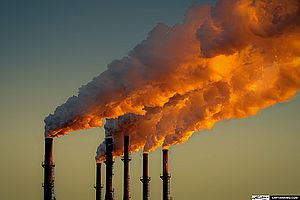Air Pollution: Good News, Bad News

New EPA regulations will limit mercury pollution to Lake Champlain. Photo from flickr.
The end of the year brought good and bad news on management of air pollution in the United States. On the plus side, EPA Administrator Lisa Jackson announced new rules and standards that will cut mercury emissions from power plants by up to 90%. In addition, emissions of sulfur dioxide, a precursor to acid rain would be reduced. EPA’s action sets emissions standards for toxic air pollutants that reflect levels already achieved by the best-performing sources currently in operation. The action responds to amendments to the Clean Air Act originally passed by Congress in 1990.
These standards are long overdue. In 2000, after years of study, EPA issued a scientific and legal determination that it was “appropriate and necessary” to control mercury emissions from power plants. The Bush administration finalized a rule to cut mercury pollution from power plants, but the D.C. Circuit struck it down and required EPA to develop standards that better followed the law and the science in order to protect human health and the environment.
Toxic air pollutants from fossil fuel-fired power plants cause serious health impacts. These facilities are the largest source of mercury emissions to the air. Once mercury from the air reaches water, microorganisms can change it into methylmercury, a highly toxic form that builds up in fish. People are primarily exposed to mercury by eating contaminated fish. Methylmercury exposure is a particular concern for women of childbearing age, unborn babies, and young children, because studies have linked high levels of methylmercury to damage to the developing nervous system. This damage can impair children’s ability to think and learn.
Despite the fact that the Clean Air Act amendments have been on the books for over twenty years, some industry spokesmen have complained that the rules are being implemented too quickly. Existing pollution dischargers will have up to four years to comply.
On the down side, a Washington D.C. court ordered EPA to delay implementation of a separate rule that would limit interstate transport of sulfur dioxide and nitrogen oxides, pre-cursors of acid rain while the court considers its legality. This rule had been issued in July and revised in October. Power companies opposed this action too. The court will hear arguments on both sides of the case in April of this year.
